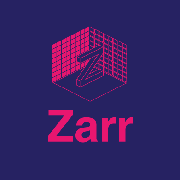See Our Projects
Projects we are actively working on
NumPy
NumPy is the fundamental package for scientific computing with Python. It contains among other things: a powerful N-dimensional array object, sophisticated (broadcasting) functions, tools for integrating C/C++ and Fortran code, and useful linear algebra, Fourier transform, and random number capabilities.
JupyterLab
conda-forge
Dask
Spyder IDE
Spyder is a powerful scientific environment written in Python, for Python, and designed by and for scientists, engineers and data analysts. It offers a unique combination of the advanced editing, analysis, debugging, and profiling functionality of a comprehensive development tool with the data exploration, interactive execution, deep inspection, and beautiful visualization capabilities of a scientific package.
SciPy
Zarr
JupyterHub
JupyterHub brings the power of notebooks to groups of users. It gives users access to computational environments and resources without burdening the users with installation and maintenance tasks. Users - including students, researchers, and data scientists - can get their work done in their own workspaces on shared resources which can be managed efficiently by system administrators.
Numba
SymPy
PyData Sparse
Sparse arrays, or arrays that are mostly empty or filled with zeros, are common in many scientific applications. To save space we often avoid storing these arrays in traditional dense formats, and instead choose different data structures. Our choice of data structure can significantly affect our storage and computational costs when working with these arrays. Sparse implements sparse arrays of arbitrary dimension on top of numpy and scipy.sparse. It generalizes the scipy.sparse.coo_matrix and scipy.sparse.dok_matrix layouts, but extends beyond just rows and columns to an arbitrary number of dimensions.
PyTorch Ignite
Ibis
Ibis is a toolbox to bridge the gap between local Python environments (like pandas and scikit-learn) and remote storage and execution systems like Hadoop components (like HDFS, Impala, Hive, Spark) and SQL databases (Postgres, etc.). Its goal is to simplify analytical workflows and make you more productive.
Uarray
metadsl
XND
We are building XND to recreate the foundations of NumPy as a number of smaller libraries, combining the lessons learned in the past twenty years of array computing in Python with the needs of newer applications. This is not a replacement of NumPy. Eventually, NumPy could use XND as could Pandas, Dask, and other libraries.
HoloViz
ndindex
Projects we aim to support
pandas
xarray
matplotlib
Matplotlib is a Python 2D plotting library which produces publication quality figures in a variety of hardcopy formats and interactive environments across platforms. Matplotlib can be used in Python scripts, the Python and IPython shells, the Jupyter notebook, web application servers, and four graphical user interface toolkits.
bokeh
Bokeh is an interactive visualization library for modern web browsers. It provides elegant, concise construction of versatile graphics, and affords high-performance interactivity over large or streaming datasets. Bokeh can help anyone who would like to quickly and easily make interactive plots, dashboards, and data applications.










